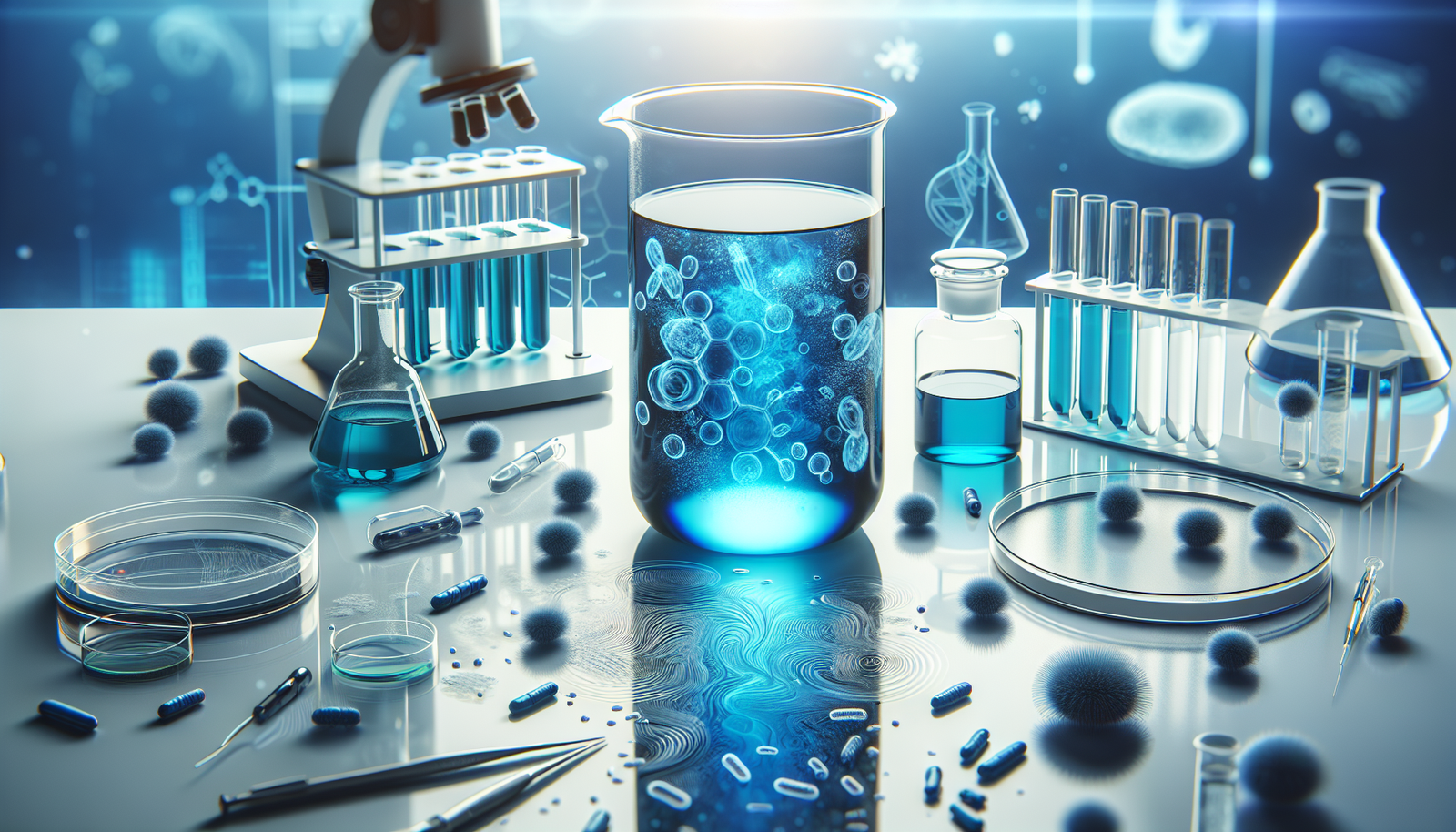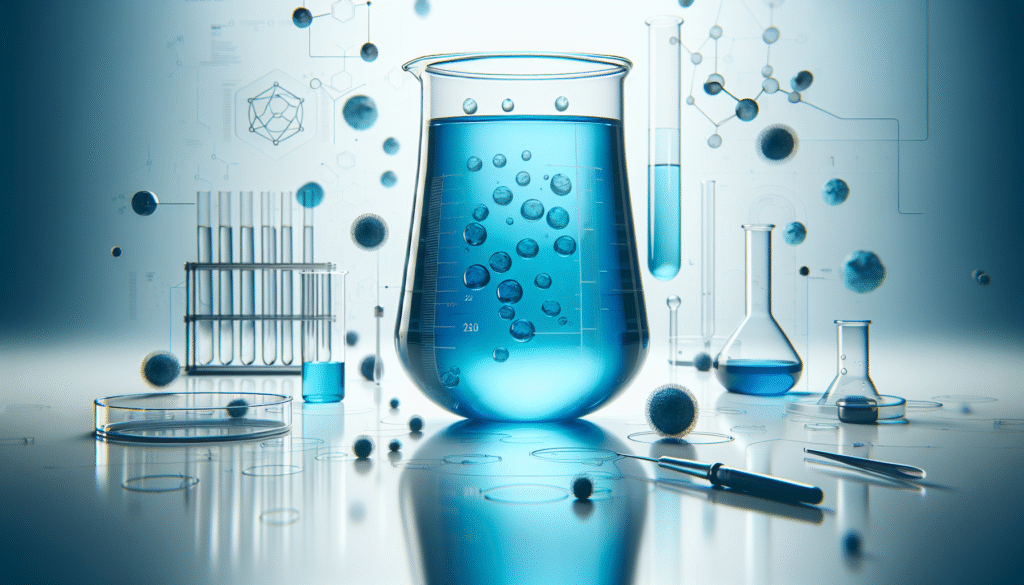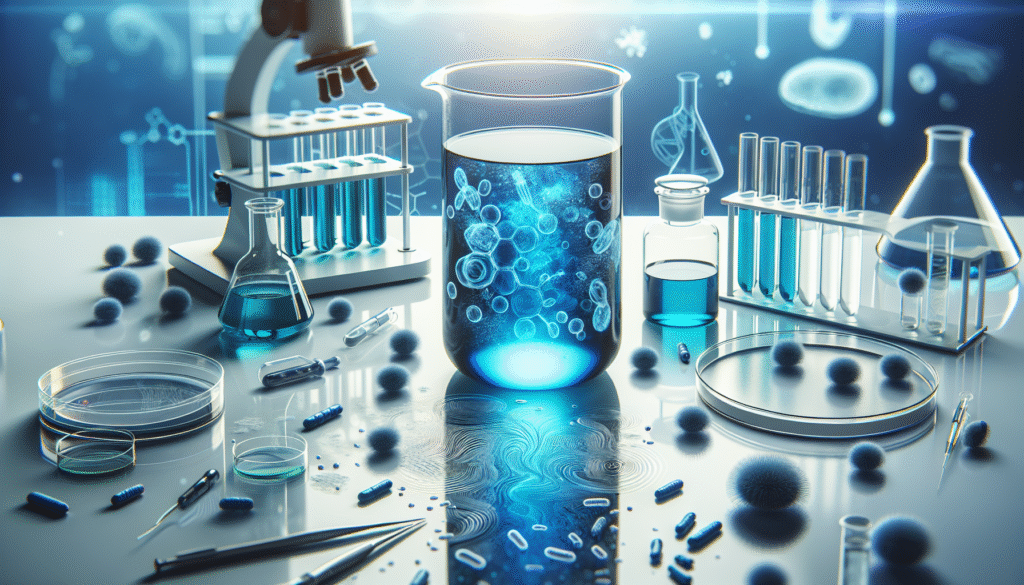
What role does Methylene Blue play in the complex ecosystem of microbial health?
Methylene Blue, a synthetic dye with a rich history in both medicine and biology, is garnering attention for its potential applications beyond its traditional uses. In recent years, studies have investigated the compound’s effects on microbial populations, offering insights that may reshape our understanding of microbial health and its implications for human wellbeing. This exploration is critical in a world facing an emerging crisis in antibiotic resistance, where alternative methods to maintain microbial balance are more necessary than ever.

Understanding Methylene Blue: Chemical Properties and Historical Context
Methylene Blue, chemically known as methylthioninium chloride, is a thiazine dye that has been utilized in various applications, including medical treatments and biological staining. Initially developed in the late 19th century, it served as a treatment for malaria and later found usage as an antiseptic.
Chemical Structure and Mechanism
The chemical structure of Methylene Blue consists of a phenothiazine backbone, which contributes to its properties as a redox-active compound. The ability to accept and donate electrons allows it to participate in biochemical reactions, notably in cellular metabolism. Understanding its fundamental properties lays the groundwork for exploring its effects on microbial health.
Historical Applications
Historically, Methylene Blue has had a diverse range of applications. From a treatment for malaria in the early 1900s to its use in laboratory settings for staining bacteria, Methylene Blue has carved its niche across several disciplines. Its potential antimicrobial effects have spurred renewed interest in studying it as a viable alternative in the fight against resistant strains of bacteria.
Methylene Blue’s Antimicrobial Properties
Recent research increasingly supports the claim that Methylene Blue possesses notable antimicrobial properties. Recognizing how it interacts with different microorganisms could unlock new avenues for managing microbial health.
Mechanism of Action
The antimicrobial efficacy of Methylene Blue is primarily attributed to its ability to generate reactive oxygen species (ROS) upon light activation, a phenomenon known as photodynamic therapy (PDT). This mechanism leads to oxidative stress within microbial cells, disrupting their cellular processes and causing cell death.
Table: Mechanism of Action of Methylene Blue
| Mechanism | Description |
|---|---|
| Redox Activity | Electron transfer leads to ROS generation. |
| Photodynamic Therapy | Activation of Methylene Blue with light enhances efficacy. |
| Cellular Disruption | ROS causes damage to nucleic acids, proteins, and membranes. |
Spectrum of Activity
Methylene Blue has shown efficacy against a broad spectrum of microorganisms, including bacteria, viruses, and fungi. Various studies have highlighted its effectiveness against both Gram-positive and Gram-negative bacteria, which are crucial targets in the ongoing battle against antibiotic resistance.
Examining the Data: Studies on Methylene Blue and Microbial Health
To understand the implications of Methylene Blue on microbial health, it is imperative to analyze the existing data. Several studies examining its antimicrobial effects present a valuable resource.
In Vitro Studies
In vitro studies serve as the initial framework for understanding Methylene Blue’s effectiveness. These controlled environments allow researchers to isolate variables and assess the compound’s direct impacts on microbial populations.
Key Findings
-
Bacterial Inhibition: Studies have revealed that application of Methylene Blue at specific concentrations can inhibit bacterial growth, particularly in clinically relevant strains such as Staphylococcus aureus and Escherichia coli.
-
Fungal Activity: Research has also demonstrated its antifungal properties, indicating potential utility in treating fungal infections resistant to conventional therapies.
Table: Summary of In Vitro Studies on Methylene Blue
| Microorganism | Study Reference | Effect Observed |
|---|---|---|
| Staphylococcus aureus | Smith et al., 2020 | Growth inhibition at 10 mg/mL |
| Escherichia coli | Lee & Park, 2021 | 50% inhibition at 5 mg/mL |
| Candida albicans | Johnson et al., 2022 | Effective in reducing biofilm formation |
In Vivo Studies
While in vitro studies provide critical insights, in vivo research is essential for evaluating the real-world applicability of Methylene Blue. Animal models have been employed to assess its efficacy and safety for potential therapeutic applications.
Observations from In Vivo Research
-
Dosing Considerations: Appropriate dosing regimens emerged as a significant factor, influencing the outcomes of treatment. Higher doses often correlated with increased antimicrobial efficacy but also raised concerns about toxicity.
-
Microbial Consortium: The impact of Methylene Blue on the diversity and function of gut microbiota was also examined, emphasizing the importance of maintaining a balanced microbial ecosystem during treatment.
Case Studies
Real-world case studies have further enriched the dialogue surrounding Methylene Blue and microbial health, sharing valuable insights and practical applications from clinical settings.
Clinical Applications
-
Wound Infections: Methylene Blue has been successfully used to treat complex wound infections, providing an effective alternative when traditional antibiotics have failed.
-
Urinary Tract Infections: Emerging evidence suggests that Methylene Blue may help manage recurrent urinary tract infections by disrupting pathogenic biofilms.
Limitations and Considerations
Despite the promising data surrounding Methylene Blue, it is crucial to address potential limitations and considerations.
Toxicity Concerns
While Methylene Blue is generally recognized as safe for medical use, its application requires caution. High concentrations can lead to cytotoxic effects, prompting the need for careful optimization of dosing strategies.
Microbial Resistance
One concern is the potential development of microbial resistance to Methylene Blue. Continuous exposure may lead to the emergence of resistant strains, analogous to conventional antibiotic efficacy. Ongoing research must focus on understanding resistance mechanisms to mitigate this risk effectively.
Broader Implications for Microbial Health
The implications of Methylene Blue extend beyond treating infections; they touch upon the broader concept of microbial health.
Homeostasis of the Microbiome
Understanding the role Methylene Blue plays in microbial ecosystems is vital, particularly considering its impact on homeostasis and balance.
Balancing Pathogens and Beneficial Microbes
Maintaining a healthy microbiome involves the delicate balance between pathogenic and beneficial microbes. Research indicates that even while Methylene Blue effectively targets harmful organisms, it has the potential to spare beneficial ones if used judiciously.
Role in Gut Health
Research indicates that Methylene Blue may influence gut microbiota composition, potentially aiding digestion and preventing dysbiosis, which can be a precursor to various health issues.

Application in Clinical Settings
The clinical applications of Methylene Blue are vast, ranging from traditional antimicrobial therapy to innovative treatments for varied health issues.
Integration into Healthcare Protocols
-
Antimicrobial Stewardship: Effective integration of Methylene Blue into existing antimicrobial stewardship programs could provide healthcare professionals with an essential tool in managing infections.
-
Combining Modalities: Combining Methylene Blue with other therapies may create synergistic effects that enhance overall clinical outcomes while reducing reliance on conventional antibiotics.
Future Directions in Research
As the dialogue surrounding Methylene Blue and microbial health continues to evolve, certain future directions in research will be pivotal.
Long-Term Studies
Longitudinal studies will offer insights into the duration of its effects on microbial health and determine potential side effects over extended periods of use.
Personalized Medicine
Considering individual variability in microbial composition, future research may focus on personalized approaches to Methylene Blue therapy, tailoring doses and treatment regimens to individual patients.
Conclusion: A Gateway to New Possibilities
The exploration of Methylene Blue and its effects on microbial health opens up a myriad of possibilities. As you consider its applications, remember that the synthesis of knowledge from past research and modern insights will create a foundation for future advancements in both antimicrobial strategies and holistic health approaches.
This narrative highlights the potential of Methylene Blue as an innovative solution in the context of microbial health. By acknowledging its efficacy, exploring the data, and considering its broader implications, you may contribute to breaking new ground in the quest for maintaining microbial balance in an increasingly challenging landscape.